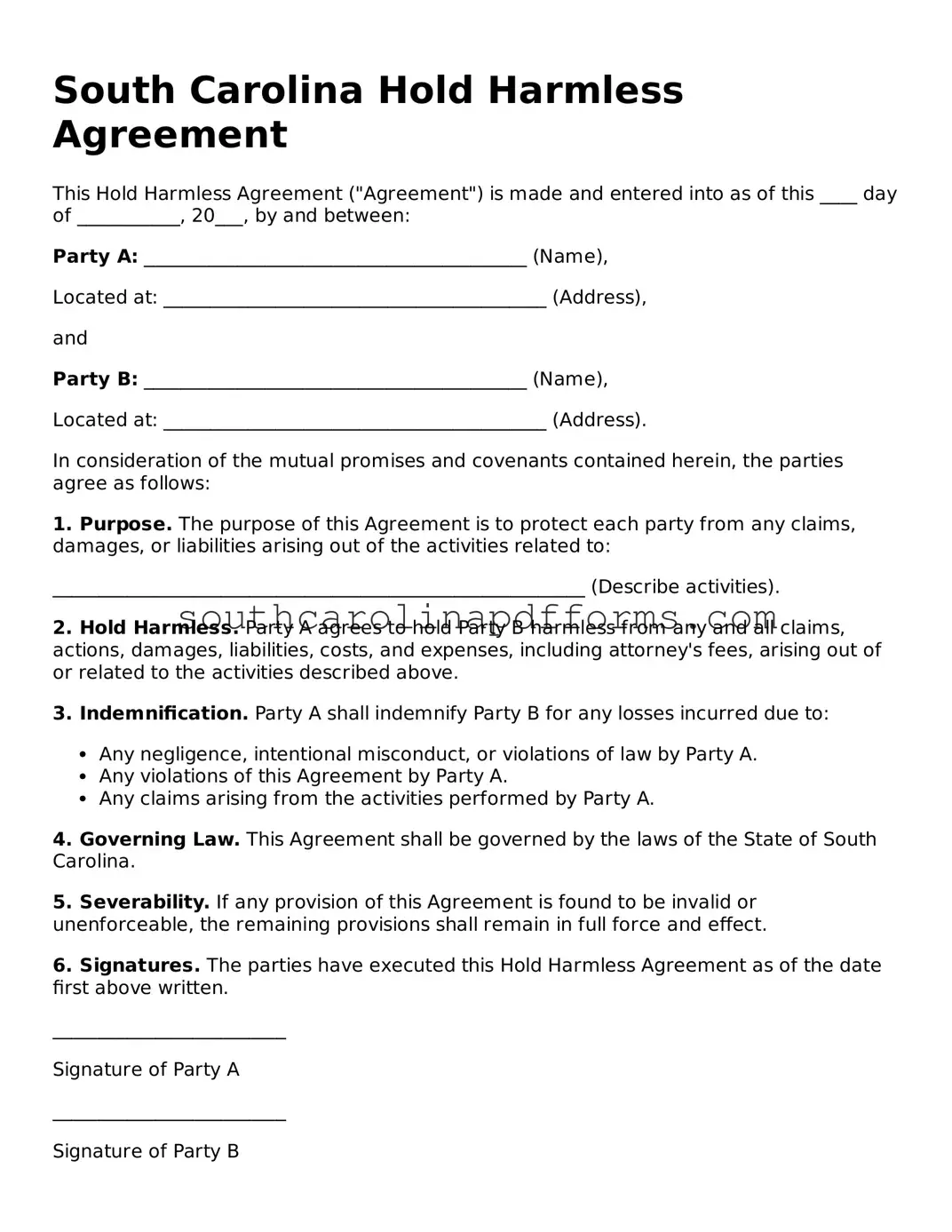Attorney-Approved South Carolina Hold Harmless Agreement Document
The South Carolina Hold Harmless Agreement is a legal document designed to protect one party from liability for damages or injuries incurred by another party. This agreement is often used in various contexts, including rental agreements, event planning, and construction projects. Understanding its purpose and implications is essential for individuals and businesses operating in South Carolina.
Access Hold Harmless Agreement Here
